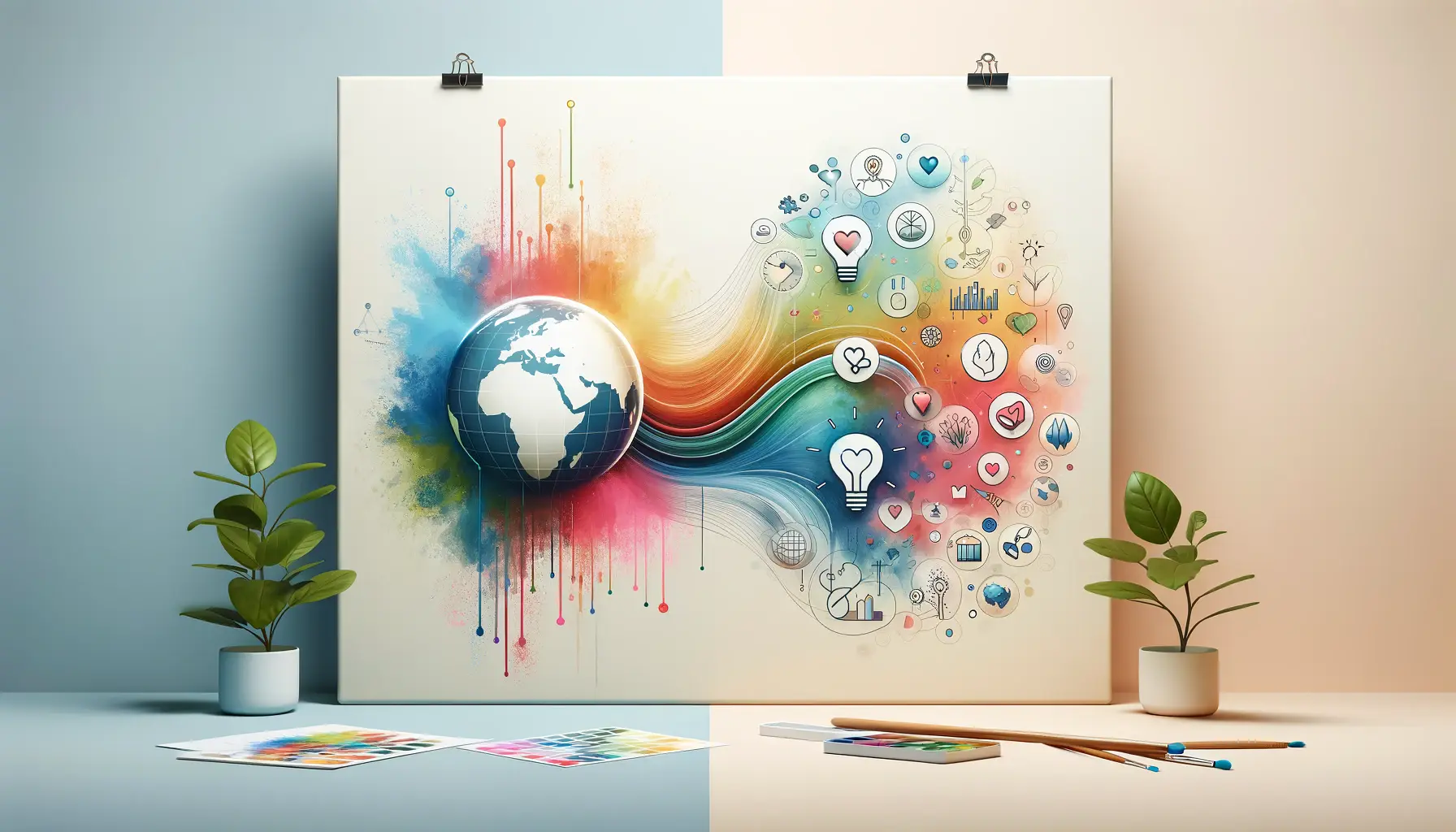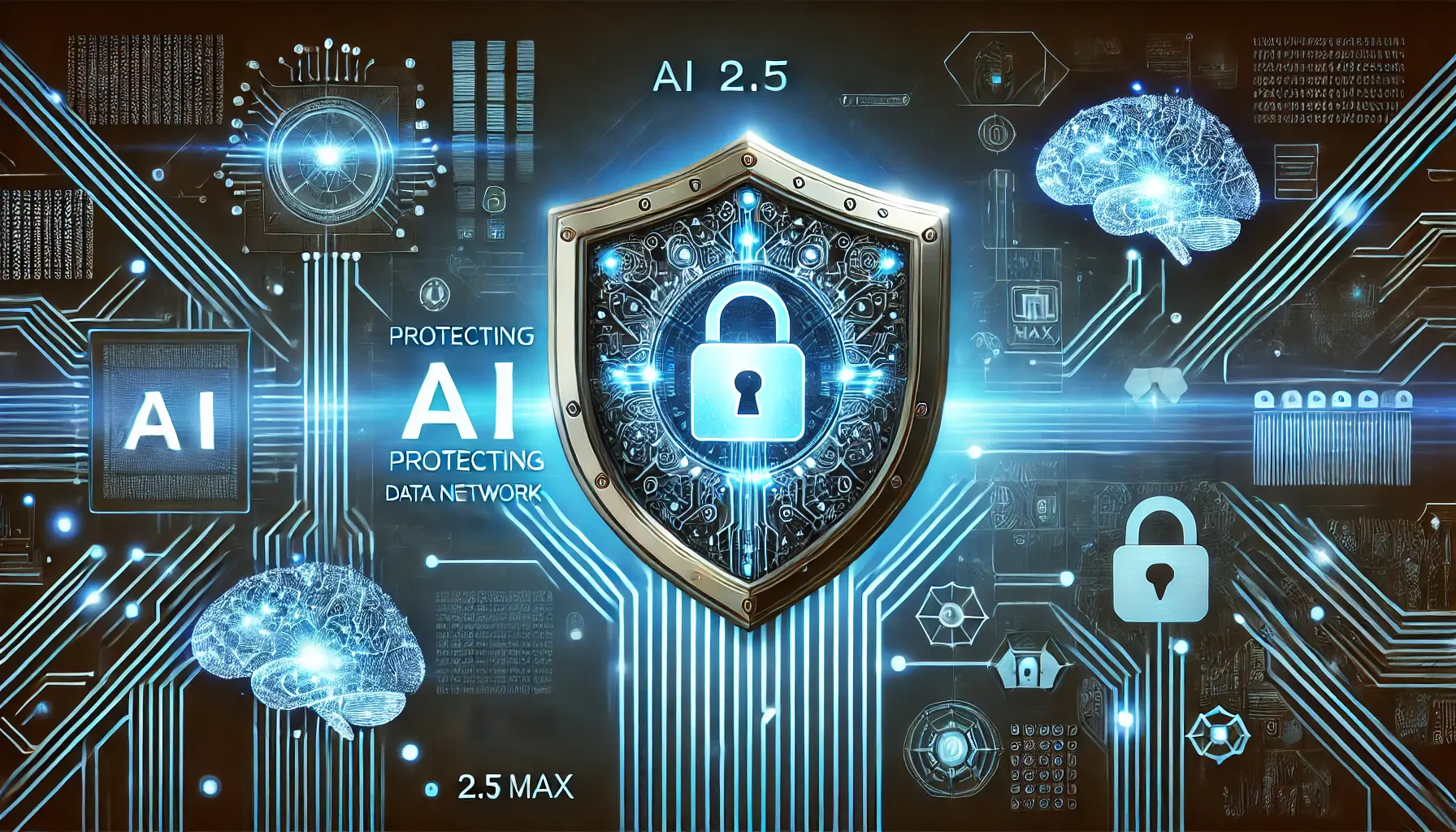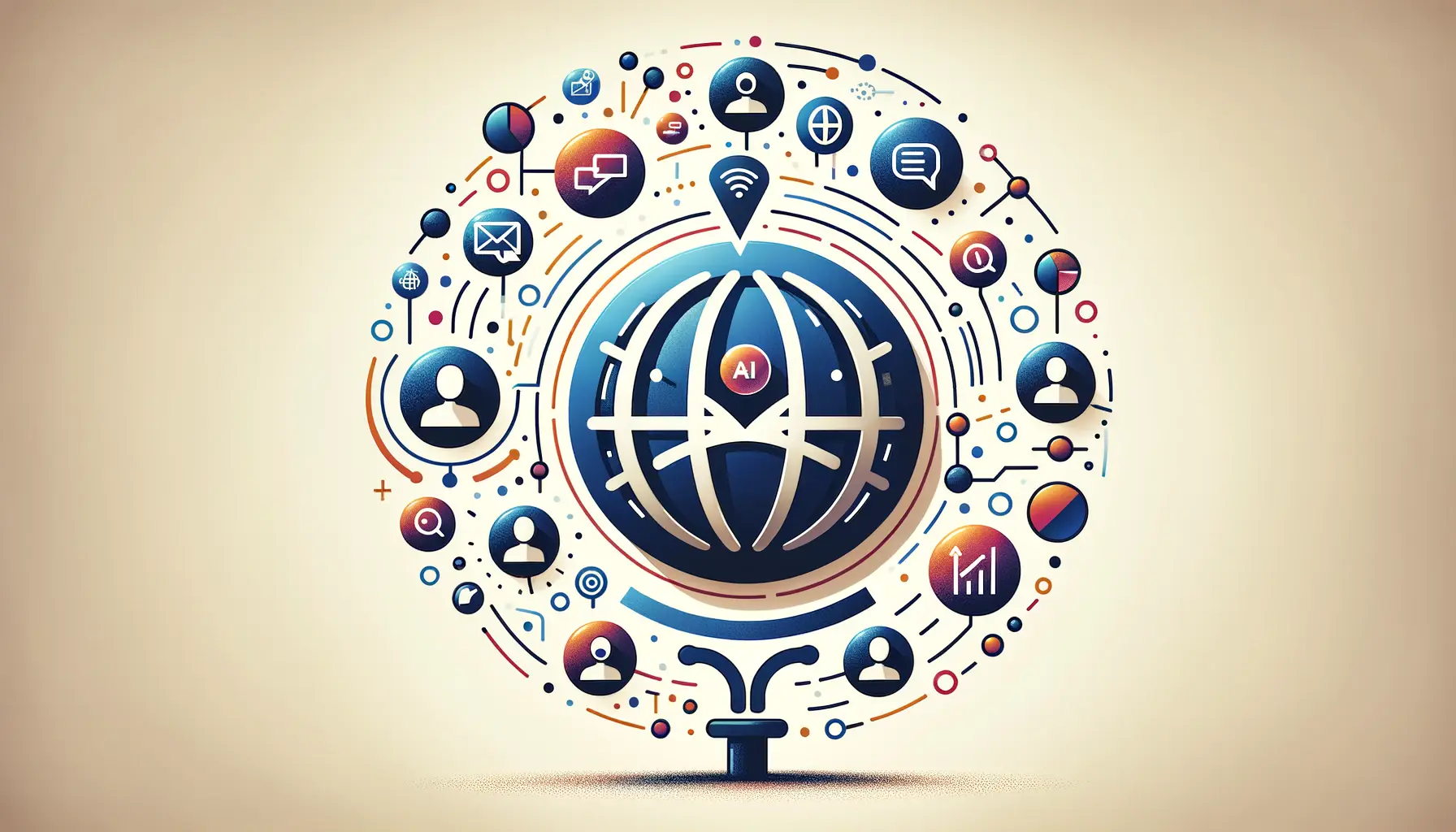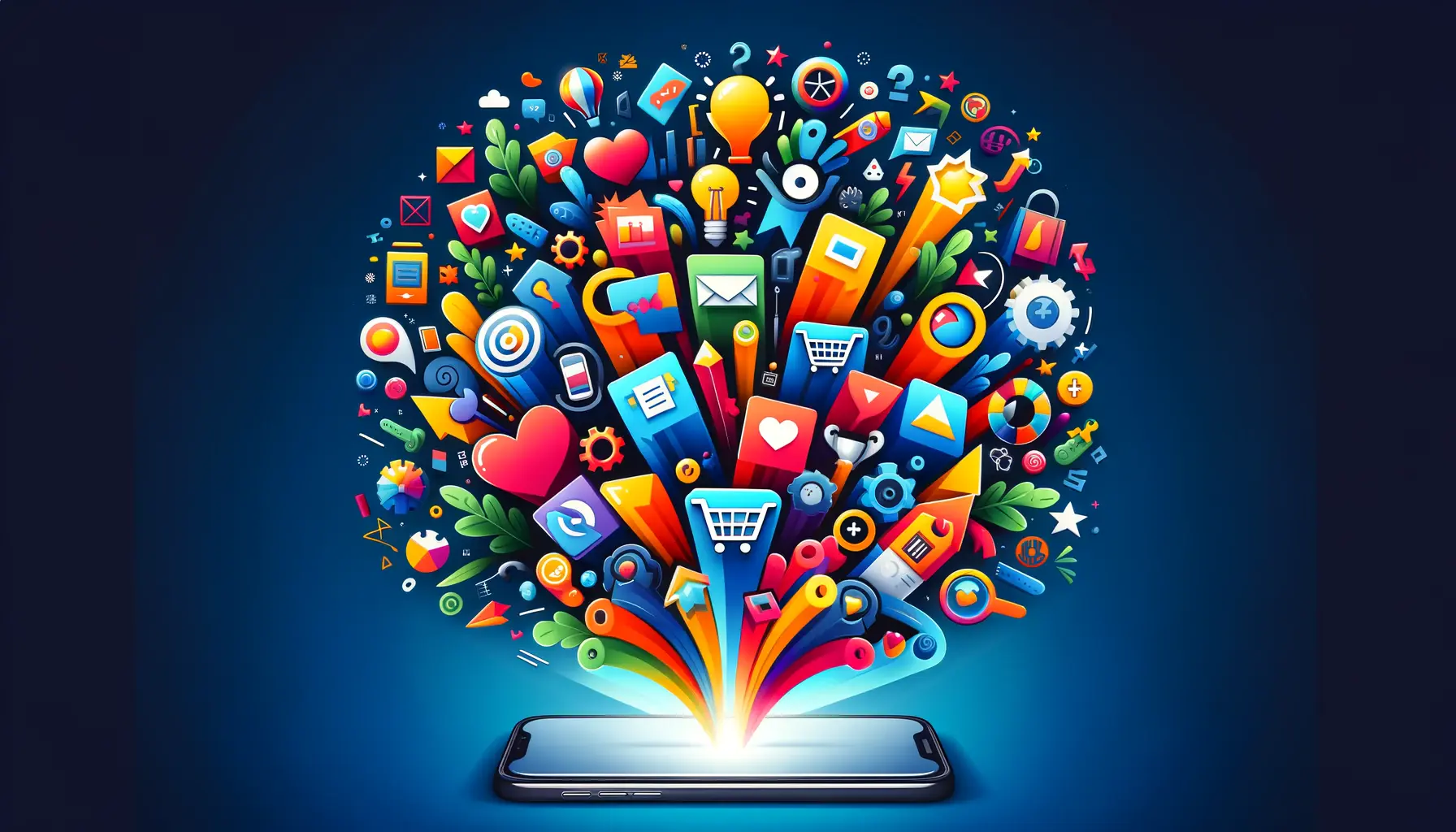In the evolving landscape of digital communication, the power of visual storytelling has never been more pronounced.
With the advent of artificial intelligence technologies, the ability to create compelling and impactful visuals has become accessible to a broader range of creators, including nonprofits.
Among these technologies, DALL-E, an AI program developed by OpenAI, stands out as a revolutionary tool for generating images from textual descriptions, opening new horizons for visual storytelling in the nonprofit sector.
Nonprofits often operate under tight budget constraints, making it challenging to produce high-quality visual content that can effectively convey their messages and missions.
However, the emergence of DALL-E as a creative ally has the potential to change this narrative.
By leveraging DALL-E, nonprofits can generate unique, engaging, and emotionally resonant images that can significantly enhance their storytelling efforts, advocacy campaigns, and fundraising initiatives without the need for extensive resources or specialized design skills.
- The Significance of Visual Storytelling for Nonprofits
- Empowering Nonprofits with DALL-E
- Challenges and Considerations
- Strategies for Effective Implementation
- Innovative Applications of DALL-E in Nonprofits
- Future Trends: AI and Nonprofit Storytelling
- Maximizing Impact with DALL-E: Best Practices
- Empowering Nonprofits Through Visual Storytelling with DALL-E
- DALL-E for Nonprofits: Frequently Asked Questions
The Significance of Visual Storytelling for Nonprofits
Visual storytelling is a critical component of effective communication strategies for nonprofits.
It transcends linguistic barriers and connects with audiences on an emotional level, making it a powerful tool for raising awareness, inspiring action, and fostering a sense of community and empathy among supporters.
The ability to tell a compelling story through visuals can dramatically increase a nonprofit’s impact, helping to bring attention to causes, mobilize resources, and drive social change.
However, creating visually captivating content that resonates with the target audience can be a daunting task, especially for nonprofits with limited access to professional graphic design services.
This is where DALL-E’s capabilities become a game-changer.
By inputting simple text descriptions, nonprofits can use DALL-E to create images that precisely match their storytelling needs, from illustrating complex issues and abstract concepts to visualizing success stories and future visions.
Transforming Ideas into Visuals
The process of transforming textual ideas into compelling visuals is at the heart of DALL-E’s appeal.
For nonprofits, this means the ability to quickly produce high-quality images that align with their messaging and campaign themes.
Whether it’s depicting the effects of climate change, visualizing the impact of humanitarian aid, or creating symbolic representations of social justice issues, DALL-E enables nonprofits to convey their messages more powerfully and engagingly.
Moreover, DALL-E’s AI-driven approach to image generation encourages creativity and experimentation.
Nonprofits can explore various visual styles, from realistic depictions to abstract art, to find the most effective way to communicate their stories.
This flexibility is invaluable in capturing the essence of a nonprofit’s mission and making their content stand out in a crowded digital landscape.
The integration of DALL-E into a nonprofit’s visual storytelling strategy can significantly enhance their ability to communicate complex messages, engage with diverse audiences, and drive social impact through compelling imagery.
Empowering Nonprofits with DALL-E
The advent of DALL-E opens up a realm of possibilities for nonprofits to leverage visual storytelling in their operations.
This AI tool not only democratizes access to high-quality visual content but also empowers organizations to convey their messages more effectively.
Here’s how DALL-E is reshaping the way nonprofits communicate with their audience:
Cost-Effective Content Creation
One of the most significant advantages of DALL-E for nonprofits is its cost-effectiveness.
Traditionally, creating custom visuals could be prohibitively expensive, requiring the hiring of professional graphic designers or purchasing stock images.
DALL-E, however, allows nonprofits to generate unique and relevant visuals at a fraction of the cost, enabling even the smallest organizations to produce professional-grade content.
- Reduction in design expenses, allowing funds to be allocated to core mission activities.
- Ability to generate multiple image variations from a single prompt, offering a diverse range of visuals for different platforms and campaigns.
Enhanced Engagement Through Visuals
Visuals created with DALL-E can significantly enhance audience engagement.
In the digital age, where attention spans are short, and the competition for viewers’ attention is fierce, compelling visuals can make a nonprofit’s content stand out.
DALL-E enables the creation of eye-catching images that can captivate audiences, encourage shares on social media, and increase the visibility of campaigns.
- Higher social media engagement rates with visually appealing posts.
- Increased website traffic through the use of unique, AI-generated images that draw attention.
Streamlining Content Production
For many nonprofits, content production can be a time-consuming process, often requiring multiple iterations and approvals.
DALL-E streamlines this process by allowing for the rapid generation of visuals, thereby speeding up the content creation cycle.
This efficiency can be particularly beneficial for time-sensitive campaigns or when responding to current events.
- Quick generation of visuals for emergency response campaigns, enabling timely communication with supporters and the public.
- Effortless creation of content for regular social media updates, keeping the audience engaged and informed.
Customization and Personalization
DALL-E’s AI capabilities allow for a high degree of customization and personalization in visual content.
Nonprofits can tailor their visuals to reflect their brand identity, resonate with their target audience, or highlight specific aspects of their work.
This level of personalization can enhance the connection with supporters and make campaigns more relatable and impactful.
- Ability to reflect the nonprofit’s brand identity through customized visuals that align with their messaging and values.
- Personalization of campaign imagery to resonate with different segments of the audience, increasing relevance and impact.
By harnessing the power of DALL-E, nonprofits can overcome traditional barriers to visual content creation, enabling them to tell their stories more effectively and connect with their audience on a deeper level.
Challenges and Considerations
While DALL-E offers numerous advantages for nonprofits in enhancing their visual storytelling capabilities, there are challenges and considerations that organizations must navigate.
Understanding these potential hurdles is essential for maximizing the benefits of DALL-E while mitigating any drawbacks.
Ensuring Ethical Use of AI
The ethical use of AI-generated images is a critical consideration for nonprofits.
As organizations dedicated to social good, it’s vital to ensure that the visuals produced by DALL-E align with ethical standards and do not inadvertently perpetuate stereotypes or misinformation.
Nonprofits must be diligent in reviewing AI-generated content to ensure it reflects their values and mission accurately.
- Reviewing AI-generated images for potential biases or inappropriate content before publication.
- Being transparent with audiences about the use of AI in creating visual content, maintaining trust and credibility.
Navigating Copyright and Ownership Issues
Understanding the copyright and ownership of AI-generated images is another challenge for nonprofits.
As the legal landscape around AI-generated content evolves, organizations must stay informed about their rights to use and distribute DALL-E visuals.
Ensuring compliance with copyright laws is crucial to avoid legal complications.
- Consulting with legal experts to understand the copyright implications of using AI-generated images.
- Keeping abreast of changes in legislation regarding AI and copyright to ensure ongoing compliance.
Maintaining Authenticity in Storytelling
While DALL-E can generate compelling visuals, maintaining authenticity in storytelling is paramount.
Nonprofits must balance the use of AI-generated images with real photos and stories from their work to ensure their messaging remains genuine and impactful.
Authenticity is key to building and maintaining trust with supporters and beneficiaries.
- Incorporating real stories and testimonials alongside AI-generated visuals to maintain a genuine connection with the audience.
- Using DALL-E to complement, rather than replace, authentic visual content from the organization’s activities.
Technical Limitations and Learning Curve
Finally, navigating the technical aspects of DALL-E and overcoming the learning curve associated with using AI for content creation can be challenging for some nonprofits.
While DALL-E is designed to be user-friendly, maximizing its potential requires understanding its capabilities and limitations.
- Investing time in training staff or volunteers on how to effectively use DALL-E for content creation.
- Experimenting with different prompts and settings to understand the range of visuals DALL-E can produce and how best to utilize them for the organization’s needs.
Despite these challenges, the potential of DALL-E to revolutionize visual storytelling for nonprofits is immense. By carefully navigating ethical, legal, and technical considerations, organizations can harness the power of AI to amplify their impact and connect with audiences in meaningful ways.
Strategies for Effective Implementation
Implementing DALL-E into a nonprofit’s visual storytelling strategy requires thoughtful planning and execution.
To leverage DALL-E effectively, nonprofits should adopt a strategic approach that aligns with their communication goals and ethical standards.
Here are key strategies for integrating DALL-E into nonprofit operations successfully.
Developing a Visual Content Strategy
Before diving into DALL-E, nonprofits should first develop a comprehensive visual content strategy.
This strategy should outline the types of visuals needed, the messages they aim to convey, and how these visuals fit into the overall communication plan.
By having a clear strategy, organizations can use DALL-E more purposefully and efficiently.
- Identifying key themes and messages that require visual support.
- Setting goals for audience engagement and impact through visual content.
Training and Capacity Building
Equipping staff and volunteers with the skills to use DALL-E is crucial for its successful implementation.
Providing training sessions and resources can help team members become proficient in generating and editing AI visuals, ensuring that the content produced aligns with the nonprofit’s standards and objectives.
- Organizing workshops or webinars on using DALL-E for visual content creation.
- Creating a guide or manual with best practices and tips for generating effective visuals with DALL-E.
Quality Control and Ethical Review
Maintaining high standards of quality and ethics in AI-generated visuals is essential.
Nonprofits should establish a review process to ensure that all visuals produced with DALL-E meet their quality standards and ethical guidelines.
This process can help prevent the dissemination of misleading or inappropriate content.
- Setting up a review committee to evaluate AI-generated visuals for quality and ethical considerations.
- Developing criteria for acceptable content and guidelines for addressing sensitive or controversial topics.
Experimentation and Feedback
Experimentation is key to discovering the full potential of DALL-E for a nonprofit’s visual storytelling needs.
Encouraging creativity and trying out different prompts can lead to innovative uses of AI visuals.
Additionally, gathering feedback from the audience on the effectiveness of AI-generated content can provide valuable insights for future content creation.
- Encouraging team members to experiment with diverse prompts and visual styles.
- Collecting and analyzing audience feedback on AI-generated visuals to inform future content strategies.
Effective implementation of DALL-E in a nonprofit’s visual storytelling efforts can significantly enhance its ability to communicate complex issues, engage with audiences, and drive social impact. By adopting these strategies, nonprofits can navigate the challenges of using AI for content creation and unlock new opportunities for innovative storytelling.
Innovative Applications of DALL-E in Nonprofits
The versatility of DALL-E offers a wide array of innovative applications for nonprofits, enabling them to push the boundaries of traditional storytelling and engagement strategies.
By exploring creative uses of this AI technology, organizations can enhance their impact and connect with audiences in novel ways.
Here are some groundbreaking applications of DALL-E within the nonprofit sector.
Visualizing Impact and Change
One of the most powerful uses of DALL-E for nonprofits is the visualization of impact and change.
By generating before-and-after images, nonprofits can visually demonstrate the tangible results of their work, from environmental restoration projects to community development initiatives.
This visual representation of change can be a compelling tool for storytelling and fundraising.
- Creating images that show the positive outcomes of conservation efforts on endangered habitats.
- Illustrating the transformation in communities due to educational programs or infrastructure development.
Enhancing Educational Materials
DALL-E can also revolutionize the creation of educational materials by generating visuals that explain complex concepts in simple, engaging ways.
For nonprofits focused on education and awareness, this can be a game-changer, making learning more accessible and enjoyable for diverse audiences.
- Producing images for educational booklets that simplify scientific concepts for young learners.
- Creating visual aids for workshops and seminars that enhance understanding of social issues.
Advocacy and Awareness Campaigns
For advocacy and awareness campaigns, DALL-E can create impactful visuals that capture the essence of a cause and evoke emotional responses.
Whether it’s highlighting human rights abuses or environmental threats, AI-generated images can be a powerful tool to draw attention and inspire action.
- Generating compelling visuals for social media campaigns that spotlight urgent issues.
- Creating posters and banners for public demonstrations that convey powerful messages.
Personalizing Donor Communications
Personalization can significantly enhance donor engagement and loyalty.
DALL-E enables nonprofits to create personalized thank-you cards, reports, and updates with custom visuals that resonate with each donor’s interests and contributions.
This thoughtful approach to donor communications can strengthen relationships and encourage continued support.
- Designing personalized visual reports that showcase the specific projects funded by individual donors.
- Creating custom thank-you cards with images reflecting the impact of donors’ contributions.
The innovative applications of DALL-E in the nonprofit sector underscore the transformative potential of AI in enhancing storytelling, education, advocacy, and donor engagement. By embracing this technology, nonprofits can unlock new creative possibilities and deepen their impact on the communities they serve.
Future Trends: AI and Nonprofit Storytelling
The intersection of artificial intelligence and nonprofit storytelling is poised for significant evolution in the coming years.
As AI technologies like DALL-E continue to advance, they will undoubtedly shape the future of how nonprofits communicate their missions, engage with audiences, and drive social change.
Here are some emerging trends and predictions for the future of AI in nonprofit storytelling.
Increased Personalization and Interactivity
Future advancements in AI will enable nonprofits to create highly personalized and interactive storytelling experiences.
By analyzing audience data, AI can help tailor content to match individual preferences, backgrounds, and engagement histories, making stories more relevant and compelling.
Additionally, interactive AI-driven narratives, where audiences can choose different paths or outcomes, will become more prevalent, enhancing engagement and immersion.
- Development of personalized video stories that adapt based on viewer interests.
- Creation of interactive, choose-your-own-adventure style narratives for educational campaigns.
Augmented Reality (AR) and Virtual Reality (VR) Integration
AR and VR technologies, powered by AI, will transform nonprofit storytelling by offering immersive experiences that transport audiences to different places and perspectives.
This can be particularly impactful for causes that benefit from a deeper understanding or emotional connection, such as environmental conservation, humanitarian crises, and cultural preservation.
- Using VR to simulate the experiences of communities affected by climate change, fostering empathy and understanding.
- Implementing AR in public spaces to visually demonstrate the potential impact of social projects, encouraging public support and participation.
Automated Content Creation and Distribution
As AI technologies become more sophisticated, we can expect to see more automated content creation and distribution.
AI will not only generate visuals but also write compelling narratives, optimize content for different platforms, and even predict the best times for posting.
This automation will allow nonprofits to maintain a consistent and impactful online presence with reduced effort and resources.
- AI-driven content management systems that automatically generate and schedule posts for maximum engagement.
- Use of AI to adapt stories and visuals for different cultural contexts and languages, broadening global reach.
Enhanced Data Visualization and Reporting
Finally, AI will play a crucial role in enhancing data visualization and reporting for nonprofits.
By converting complex data sets into compelling visual stories, AI can help nonprofits communicate their impact more effectively, making it easier for supporters, donors, and the public to understand and appreciate the value of their work.
- Generating dynamic, interactive data visualizations that highlight progress towards goals and milestones.
- Creating automated impact reports that visually summarize achievements, challenges, and future plans.
The future of AI in nonprofit storytelling is bright, with emerging technologies offering new ways to captivate, educate, and inspire action. As nonprofits embrace these innovations, they will be better equipped to tell their stories in ways that resonate deeply with audiences and drive meaningful change.
Maximizing Impact with DALL-E: Best Practices
As nonprofits continue to explore and integrate DALL-E into their storytelling and communication strategies, adopting best practices is crucial for maximizing the impact of this innovative tool.
By following these guidelines, organizations can ensure that their use of AI-generated visuals is effective, ethical, and aligned with their mission and goals.
Align Visuals with Organizational Values
It’s essential that the visuals generated by DALL-E reflect the core values and principles of the nonprofit.
This alignment ensures that the content not only captures attention but also reinforces the organization’s identity and message.
Nonprofits should carefully consider the imagery, themes, and narratives they wish to promote through AI-generated visuals to maintain consistency and integrity in their communication.
- Reviewing all AI-generated content to ensure it aligns with the organization’s ethical standards and messaging.
- Using visuals that accurately represent the diversity and inclusivity of the communities served by the nonprofit.
Embrace Creativity and Innovation
DALL-E offers unprecedented opportunities for creativity and innovation in visual storytelling.
Nonprofits should embrace these possibilities, experimenting with different prompts, styles, and concepts to discover unique ways of conveying their messages.
This exploratory approach can lead to fresh, engaging content that stands out and captivates audiences.
- Encouraging team members to experiment with diverse prompts and explore new narrative possibilities.
- Organizing brainstorming sessions to generate creative ideas for using DALL-E in campaigns and storytelling.
Ensure Accessibility and Inclusivity
Accessibility and inclusivity should be at the forefront when creating visuals with DALL-E.
Nonprofits must ensure that the content is accessible to people with disabilities and represents diverse communities respectfully and accurately.
This commitment to inclusivity not only broadens the reach of the content but also demonstrates the organization’s dedication to equity and representation.
- Incorporating alt text descriptions for AI-generated images to ensure accessibility for visually impaired audiences.
- Striving for diversity in the visuals to reflect the varied identities and experiences of the target audience.
Monitor Audience Engagement and Feedback
Gauging audience reactions to AI-generated visuals is crucial for assessing their effectiveness and impact.
Nonprofits should closely monitor engagement metrics and solicit feedback from their audience to understand how the content is being received.
This feedback loop allows organizations to refine their approach and continuously improve the quality and relevance of their visual storytelling.
- Utilizing social media analytics to track the performance of posts featuring AI-generated visuals.
- Conducting surveys or focus groups to gather direct feedback from supporters and beneficiaries about the content.
Assuming that AI-generated content will automatically resonate with all audiences is a common misconception. Continuous testing, feedback, and adaptation are key to ensuring that visuals truly engage and inspire the intended audience.
Empowering Nonprofits Through Visual Storytelling with DALL-E
The integration of DALL-E into the nonprofit sector signifies a transformative shift in how organizations approach visual storytelling.
This AI-driven tool not only democratizes the creation of high-quality visual content but also opens up new avenues for engaging storytelling, advocacy, and education.
As nonprofits continue to navigate the challenges and opportunities presented by digital communication, DALL-E emerges as a powerful ally in their mission to drive social change.
Unlocking New Creative Potentials
The advent of DALL-E for nonprofits heralds a new era of creativity and innovation.
By enabling organizations to generate compelling visuals from simple text descriptions, DALL-E breaks down traditional barriers to content creation.
This newfound ability to produce diverse, impactful images with ease allows nonprofits to convey their messages more effectively, connect with their audiences on a deeper level, and inspire action towards their causes.
Best Practices for Maximizing Impact
For nonprofits to fully leverage the potential of DALL-E, adherence to best practices is essential.
These include aligning visuals with organizational values, embracing creativity, ensuring accessibility and inclusivity, and actively monitoring audience engagement.
By following these guidelines, nonprofits can ensure that their use of DALL-E not only enhances their storytelling efforts but also upholds their commitment to ethical and responsible communication.
- Aligning AI-generated content with the nonprofit’s mission and ethical standards.
- Exploring innovative storytelling formats and narratives.
- Making content accessible and inclusive to all audience segments.
- Engaging with audiences to gather feedback and refine strategies.
Looking Ahead: The Future of AI in Nonprofit Storytelling
As we look to the future, the role of AI in nonprofit storytelling is poised for further growth and evolution.
Advances in technology will likely introduce new tools and capabilities, enabling even more personalized, interactive, and immersive storytelling experiences.
Nonprofits that stay at the forefront of these developments, embracing new technologies like DALL-E while remaining mindful of ethical considerations, will be well-positioned to amplify their impact and lead the way in digital communication.
- Adopting emerging AI technologies for more immersive storytelling experiences.
- Continuing to prioritize ethical considerations in the use of AI.
- Leveraging AI to foster deeper connections with audiences and drive meaningful action.
In conclusion, DALL-E for nonprofits represents a significant advancement in the field of visual storytelling, offering both challenges and opportunities.
By embracing this technology, nonprofits can enhance their storytelling capabilities, engage with audiences in innovative ways, and drive greater impact in their pursuit of social good.
As we move forward, the thoughtful and strategic use of DALL-E and other AI tools will be crucial for nonprofits aiming to tell their stories in the digital age.
DALL-E for Nonprofits: Frequently Asked Questions
Explore common inquiries about leveraging DALL-E for nonprofit storytelling and operations.
Yes, nonprofits engaged in social impact efforts can request discounts or tokens for DALL-E, supporting their mission-driven projects.
DALL-E credits, both free and paid, are shareable within an organization, allowing multiple team members to access and utilize the tool for creative projects.
Yes, DALL-E is designed to be user-friendly, making it accessible for nonprofits to create compelling visual content for storytelling and advocacy.
Nonprofits can use DALL-E for commercial uses, including fundraising materials and promotional content, with proper adherence to content policies.
DALL-E can revolutionize nonprofit operations by providing a cost-effective way to generate unique visual content for various communication needs.
Yes, nonprofits should consider legal and ethical aspects, including copyright and the responsible use of AI-generated imagery, to ensure compliance and integrity.
DALL-E’s ability to create detailed and accurate visuals from textual descriptions makes it an excellent tool for enhancing educational materials with custom imagery.
By generating customized visuals, DALL-E supports personalized communications, allowing nonprofits to create tailored messages that resonate with individual donors.












